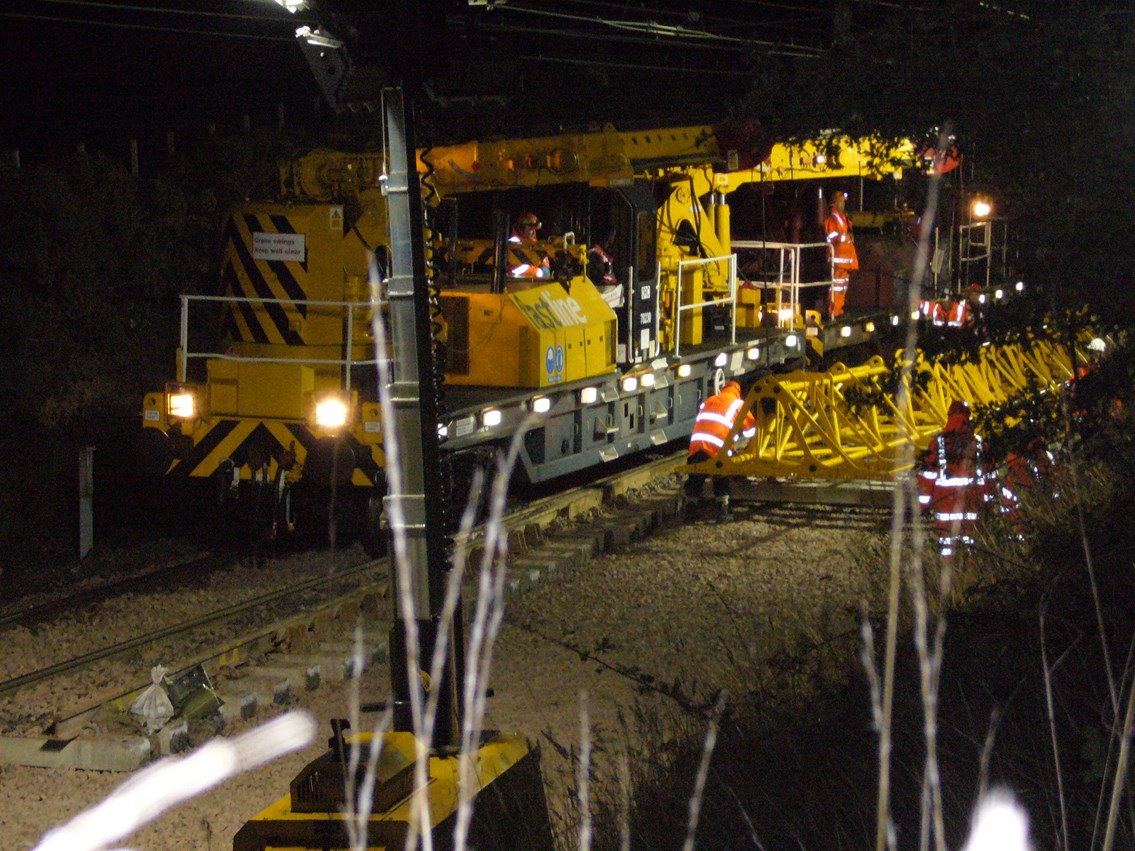Tuesday 15 Apr 2008
NEW TILTING WAGONS POINT TO REDUCTIONS IN LENGTHY LINE CLOSURES
- Region & Route:
- National
A pioneering project to reduce line closures for engineering upgrades by slashing the time it takes to renew a set of points took a significant step forward as Network Rail ordered 26 specialised ‘tilting’ wagons.
The £10m order with Kirow, a German plant manufacturer, forms part of Network Rail’s modular switches and crossings programme which will help engineers renew a set of points in overnight eight-hour possessions, reducing disruption caused to passengers. Currently, it takes around 54 hours to carry out this work, often requiring weekend line closures.
Doing as much preparatory and construction work away from the railway and keeping line closure times to a minimum lies at the heart of the programme. Points will be fully constructed and tested in factories before being taken to site in modular panels which can be installed quickly. Being factory built will also improve their reliability and durability.
The wagons' ability to tilt their loads means that these panels - normally too wide to fit within the confines of the railway - can be safely transported directly to site. When the wagons arrive, the decks are moved back to a horizontal position for the panels to be unloaded and slotted into place.
Network Rail’s chief engineer Andrew McNaughton said: “The modular programme is set to deliver big benefits in the way we upgrade the railway, enabling us to do it quicker and more efficiently while improving quality and reliability. Being able to deliver fully-constructed switch-panels directly to site will be a significant step forward towards the seven-day railway for passengers and freight users.”
Network Rail expects the first wagons to be fully tested and ready for use by autumn 2009, with the full fleet of 26 vehicles in operation in 2010.
Notes to editors
The switches and crossings panels, or points, have a bearer (sleeper) length of up to 3.7metres, which is too long to fit within the network’s W6a gauge profile. The wagons’ decks can tilt their loads up to an angle of approximately 60 degrees so that the panels can fit within the width of the railway. The decks will be 22.5m long. This length is sufficient for the majority of the switches and crossings on the network. For longer panels, the deck can be extended to allow panels of up to 26.5m to be carried.Contact information
Passengers / community members
Network Rail national helpline
03457 11 41 41
Latest travel advice
Please visit National Rail Enquiries
Journalists
Network Rail press office - National
020 3356 8700
mediarelations@networkrail.co.uk
About Network Rail
We own, operate and develop Britain's railway infrastructure; that's 20,000 miles of track, 30,000 bridges, tunnels and viaducts and the thousands of signals, level crossings and stations. We run 20 of the UK's largest stations while all the others, over 2,500, are run by the country's train operating companies.
Usually, there are almost five million journeys made in the UK and over 600 freight trains run on the network. People depend on Britain's railway for their daily commute, to visit friends and loved ones and to get them home safe every day. Our role is to deliver a safe and reliable railway, so we carefully manage and deliver thousands of projects every year that form part of the multi-billion pound Railway Upgrade Plan, to grow and expand the nation's railway network to respond to the tremendous growth and demand the railway has experienced - a doubling of passenger journeys over the past 20 years.
Follow us on Twitter: @networkrail
Visit our online newsroom: www.networkrailmediacentre.co.uk

